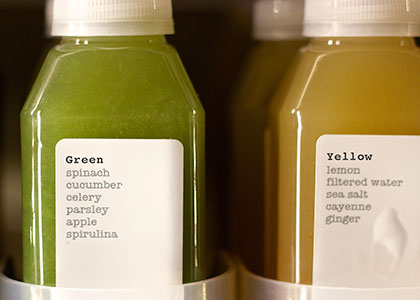
Are Bottled Juices Okay?
By Joe Cross
Many people wonder if they can drink bottled juices. Yes you can! You just need to take some care in choosing between brands and types of bottled juice.
Unlike fresh juice, bottled juices are usually treated to kill pathogenic organisms to extend the shelf life of the product. A newer process called HPP (High Pressure Processing), makes drinking certain bottled juices a great choice when you can’t find fresh. This type of process subjects the juice to very high pressure, which eliminates pathogens and helps protect nutrients and flavor. You can, therefore, drink bottled juice on a Reboot provided it is labeled HPP. One example is Suja, widely available in the United States.
When shopping, look for the term “HPP,” “high-pressure processed,” “cold-pressed,” or “cold pasteurized” on the label.
In contrast, many other bottled juices you find in a store are heat-pasteurized, meaning they have been heat-treated to kill bacteria, which may destroy some nutrients, color, and flavor compounds.
Why choose HPP juice? Within a living pathogen, cellular structures such as the cell membrane are pressure sensitive, which results in these pathogens dying, while other elements of the juice responsible for taste, color and nutrition are not typically changed by pressure. This allows the juice to be stored for longer periods of time than fresh juices while helping protect the quality and taste of the juice.
Bottom line, I’m a huge fan of fresh juice. Making your own or going to your local juice bar for a fresh one is, in my opinion, the best option. But I also believe that drinking a bottled juice is better than no juice at all, which is why HPP juice is the next best thing to fresh. If you’re on the road, look out for Suja juices. They are an excellent choice when you can’t find fresh, and you can have them shipped directly to you.
One last consideration: Check the blend of bottled juices, particularly if you are Rebooting. Many varieties can be heavy on fruit, and light on veggies. Look for about 80% vegetables and 20% fruit in your juice blends, whether fresh or bottled.
Note: This post contains affiliate links